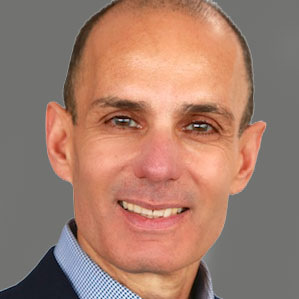Are you dreaming big enough?
Most teams approach strategy development by looking in their rear-view mirror.
Starting from their present reality, they review their past successes and shortfalls. They analyze their capabilities and means. And, based on that analysis they project their expectations into the future – typically coming up with ‘best case’, ‘worst case’, and ‘most likely case’ scenarios.
Sometimes teams benchmark other companies in order to understand industry standards so that they know how high to aim. Benchmarking is often a limiting exercise, as it is merely another way to shape your aspirations based on the past – this time another company’s past.
There is nothing wrong with this approach if your business is mature, predictable or you are operating in a status quo pace. However, if you want to take your business to a new level and achieve much bolder results – this approach will not suffice.
When Kennedy declared in May 1961 that the USA would put a man on the moon and bring him back safely by the end of the decade, many people around him were very skeptical because most of the crucial technologies and organizational structures necessary to achieve his bold vision and strategy did not exist.
However, Kennedy’s future-based vision and strategy brought about a new stream of events and priorities, that ultimately enabled the USA to fulfill his bold vision and strategy.
The way Kennedy approached strategy is much more powerful and compelling than the way most companies and teams approach strategy. He went straight to describing the future state he was committing to in a very simple, clear and powerful way: ‘Man on the moon and back safely by the end of the decade’.
He did not look to the past to determine if his vision was feasible. In fact, after consulting with Vice President Johnson, NASA Administrator James Webb, and other officials, he concluded that landing an American on the Moon would be a very challenging technological feat.
But Kennedy didn’t approach his declaration casually. He didn’t put it out there and then stand aside to see if it would work. Instead, he marshaled his resources to pursue his dream, fulfill it and prove his vision right!
And as we all know, the Man on the Moon story had a happy ending, as Kennedy’s goal was achieved on July 20, 1969 when Apollo 11 commander Neil Armstrong stepped off the Luna Module’s ladder and onto the Moon’s surface.
Create your vision
You can use the same approach as Kennedy used to create your own team or personal vision.
Start the vision development by placing yourself in a future time. Then, from that place, articulate the outcomes and future state that you are committed to. Then think your way back from that future state to the present, in order to create your milestones and execution plan.
So often teams try to derive realistic objectives by running numbers and trying to foresee all the circumstances that could affect their outcome. I strongly advise against that!
Make sure your strategy development exercise is not merely an accounting exercise, informed by a bit of leadership. In fact, do it the opposite way. Make sure your exercise is a leadership exercise, informed by a bit of accounting.
The accounting part helps you bring some realism, feasibility, confidence and believability to your bold future vision. When Kennedy promised the Moon, even though the key technologies did not exist, he was encouraged by the fact that the USA was leading the global space exploration race.
However, if your goal is predicated too much on accounting assumptions, this will diminish your ambition to the mere predicable. And, if your goal becomes too realistic and doable, it will lose the exciting thrill and adventurous feeling associated with taking on something that has never been done before.
In addition, if your vision is conditional upon certain predictions and assumptions, the minute these circumstances evolve and these assumptions change the entire vision could become invalid.
I have had the chance to help teams and individuals generate bold strategies for many years. I have seen a great number of them achieve extraordinary results beyond their expectations this way.
People always emerged from this exercise extremely energized, with high levels of ownership and commitment every time.
You should try it within your own team and in your own life!





Leave a Reply
Want to join the discussion?Feel free to contribute!